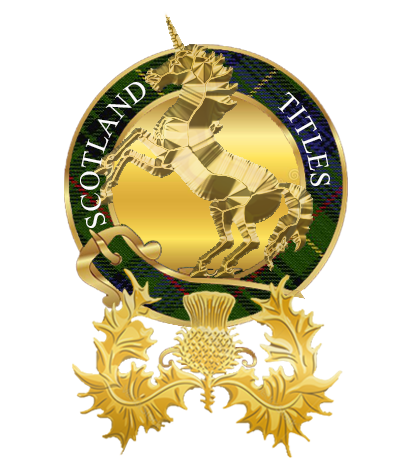Scottish Recipes
Learn some traditional Scottish recipes to cook at home
For more recipies, why not check out these pages:
https://www.facebook.com/groups/194762454496815/

TRADITIONAL SHORTBREAD
Recipe to bake traditional Scottish shortbread biscuits with ingredients and baking directions to make 12 fingers. Best tray baked and then split once cooked.
Ingredients
175g of self raising flour (for extra crunch replace 25g of flour with fine semolina powder)
50g of sugar
100g of butter
Method
Cream the butter and sugar together in a bowl into a consistent and smooth paste. Add the flour and mix until it holds together. Try to work it as little as possible or it will go hard.
Remove from the bowl and dust in semolina.
Press into an 8inch square tin and smooth, and make pinpricks all over. Draw lines to make fingers if you wish.
Bake in the oven at 160c, 325f or gas mark 3 for 25 minutes. It should be just turning brown and no more.
Remove, dust with caster sugar and cut into 12 fingers while still warm
Cool for 15 minutes in the tin.
Place on a rack until cold and store in an airtight tin.
Shortbread can be enjoed anytime, but it goes particularly well with a wee dram of whisky!

MILLIONAIRE SHORTBREAD
Ingredients
8oz butter
2oz caster sugar
8oz plain flour
2 tablespoons of golden syrup
small tin of condensed milk
4oz cooking chocolate
Method
Cream the caster sugar with half of the margarine and then add the flour.
Mix as you would for shortbread then roll out and bake in a swiss roll tin at 180C until slightly brown.
Mix the other 4oz margarine with the golden syrup and add the condensed milk. Bring it to the boil in a small pan and continue boiling for about five minutes stirring continously. Then spread the caramel mixture over the shortbread base.
Melt the chocolate and pour it over the toffee mixture.
Allow to cool and then cut into pieces.
Store in the fridge or an airtight container for about five days, though they never last that long in our house and are all eaten the same day!

PORRIDGE
Scottish Porridge is quick and easy to make and tastes delicious. It is a hearty meal for breakfast that helps to keep you feeling full for a long time and is a great source of fibre. It is enjoyed not just in Scotland but throughout the world. It is thought that it can help lower cholesterol if taken along with a general healthy diet and lifestyle.
The traditional Scottish method is to use the finest Scots porridge oats or a good quality oatmeal.
Ideally soak the oats overnight in the quantity of water needed for each portion. This results in it being fluffier and tastier and is especially important for those using finer oatmeal. Traditionally you should stir clockwise but stirring this way and anticlockwise would help break up the oats and stop it sticking to the saucepan.
Some like to cook porridge recipes with water, other milk and some use half quantities.
The easiest way to describe this is to use 50 grams of oats per portion to 300mls of water or milk. Mix this into a pan and heat on a medium setting on the stove or hob. Stir continuously and once thickened turn off the heat and serve. Those who prefer to use oatmeal, especially medium oatmeal or pinhead oatmeal will need to allow up to 30 minutes simmering time until it is thoroughly cooked. Those wanting a quick meal should stick to Scotch porridge oats. This has the added advantage of being able to be cooked in the microwave.
If using pinhead oatmeal, which gives a more delicious flavour, then use one cup of medium or coarse pinhead oatmeal be mixed with three cups of cold water and a pinch of salt if needed and left to soak the night before.
This is then slowly brought to the boil in the morning and cooked for about ten minutes whilst being stirred frequently. Pinhead oatmeal will need another five minutes cooking time.

TATTIE SCONES
In Scotland, potatoes are called ‘Tatties’. Tattie Scones are easy to make and requires few ingredients. They can be enjoyed on their own with a topping such as butter, margarine, jam, marmalade, grated cheese, etc. They are best eaten warm and are easily reheated.
Ingredients
500g of cold potatoes, boiled and mashed
100g of plain flour
50g of butter
Pinch of salt
Method
A girdle or griddle pan is the best way to make tattie scones though a frying pan can also be used, choose one with a thick base if possible. The trick is not to let the mixture get dry.
Boil the tatties and then mash them thoroughly. Add a little butter and salt if needed.
Add the flour and butter and mix well into a smooth consistency.
Empty onto a flat surface and use a rolling pin to roll out the mixture evenly and to a desired height of about 3mm.
Shape into rounds about the size of a side plate, and cut into quarters so you have the traditional shape of 4 triangles. Some bakers now sell round ones, but this isn’t traditional.
Put each one into the griddle or frying pan and cook on both sides until brown.
Serve whilst hot, covered in butter and a topping of your choice.
To reheat later, you can toast in a grill or toaster. For breakfast, fry in a little olive oil and butter, until golden brown and a little crunchy round the edges.
